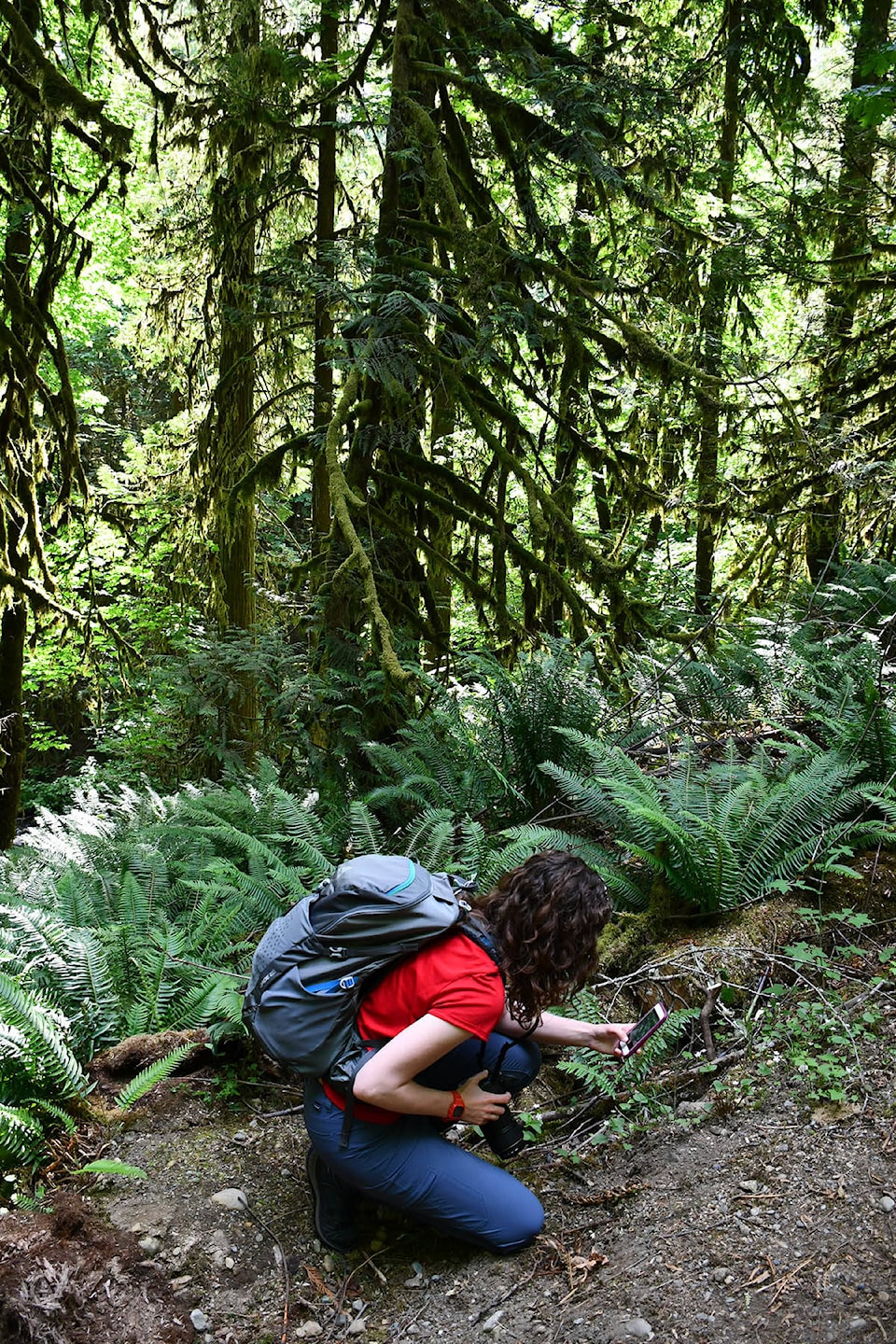Do your plant identification skills start and end with Charlie Brown Christmas tree sightings? The iNaturalist app may be for you, especially now that it’s being promoted through the BC Parks iNaturalist project.
Through the project, team members have input the boundaries of every provincial park and protected area in B.C. so that visitors of all backgrounds can use their phone or camera to photograph and help identify plants and animals, categorized by location.
“For those of us who love parks, but don’t have a scientific background, the iNaturalist app is great because the powerful AI technology can help identify the species you’ve photographed,” said Colleen Dunbar of the BC Parks Foundation.
READ MORE: BC Parks Foundation board begins work
Dunbar said BC Parks, the foundation as well as the Simon Fraser Universty (SFU) and Universty of Victoria (UVic) are encouraging more people to become “citizen scientists” using the app next time they visit a B.C. park or protected area. More important than seeming smart in front of your hiking friends, she said citizen scientists can use the app to crowdsource species observations, such as animal migration patterns and even the effects of climate change.
“iNaturalist serves as your very own personal nature interpreter – you take a photo on your phone, have the app scan the photo with its powerful artificial intelligence, and it will suggest a species ID for you,” added UVic’s Brian Starzomski, project co-lead.
“Even better, you become a citizen scientist when you upload your observation to iNaturalist, where it will be automatically added to the BC Parks project, creating a massive new inventory of biodiversity information for all British Columbians.”
So far more than 67,000 observations of over 4,200 species have been catalogued by over 1,600 observers through the project. Citizen scientists have observed a very out of range northern mockingbird on Goose Island near Bella Bella, for example, and the first record of the endangered plains forktail damselfly in B.C. on iNaturalist.
A community of keen citizen scientists called “identifiers” confirm the identity of species that have been documented and help correct any errors and ensure as many observations are research grade as possible.
Researchers at SFU and UVic then study those findings and help provide recommendation to BC Parks management decisions as a result.
“It’s through the power of numbers that we will build a new understanding of what is out there and how it is changing in the face of climate change and other pressures,” said foundation CEO Andrew Day.
“Every visitor makes a difference by adding a piece of the puzzle, and soon we can see the picture.”
To become a citizen scientist visit bcparksfoundation.ca/inaturalist.
